Abstract
Whang, H. Y. (Children's Hospital, Buffalo, N.Y.), and E. Neter. Selective destruction by Pseudomonas aeruginosa of common antigen of Enterobacteriaceae. J. Bacteriol. 88:1244–1248. 1964.—Supernatant fluids and filtrates from several strains of Pseudomonas aeruginosa, when incubated with common antigen from various enteric bacteria, will produce selective destruction of this antigen, leaving intact the simultaneously present O antigen. This effect is evidenced from hemagglutination, hemolysis, antibody absorption, hemagglutination inhibition, and immunization experiments. The Pseudomonas factor is heat-labile, being destroyed by heating at 100 C for 10 min. The action of this factor on the antigen is time-dependent and temperature-dependent, requiring incubation for 18 to 72 hr and progressing more rapidly at 50 or 56 C than at 37 C. The specificity of the reaction is indicated by the fact that supernatant fluids from cultures of Staphylococcus aureus and Bacillus subtilis, as well as several enzymes, such as pancreatic protease, trypsin, and lipase, have no effect on the common antigen. Utilization of the Pseudomonas factor, conceivably an enzyme, may aid in the eventual elucidation of the chemical nature of the common antigen of enteric bacteria.
Full text
PDF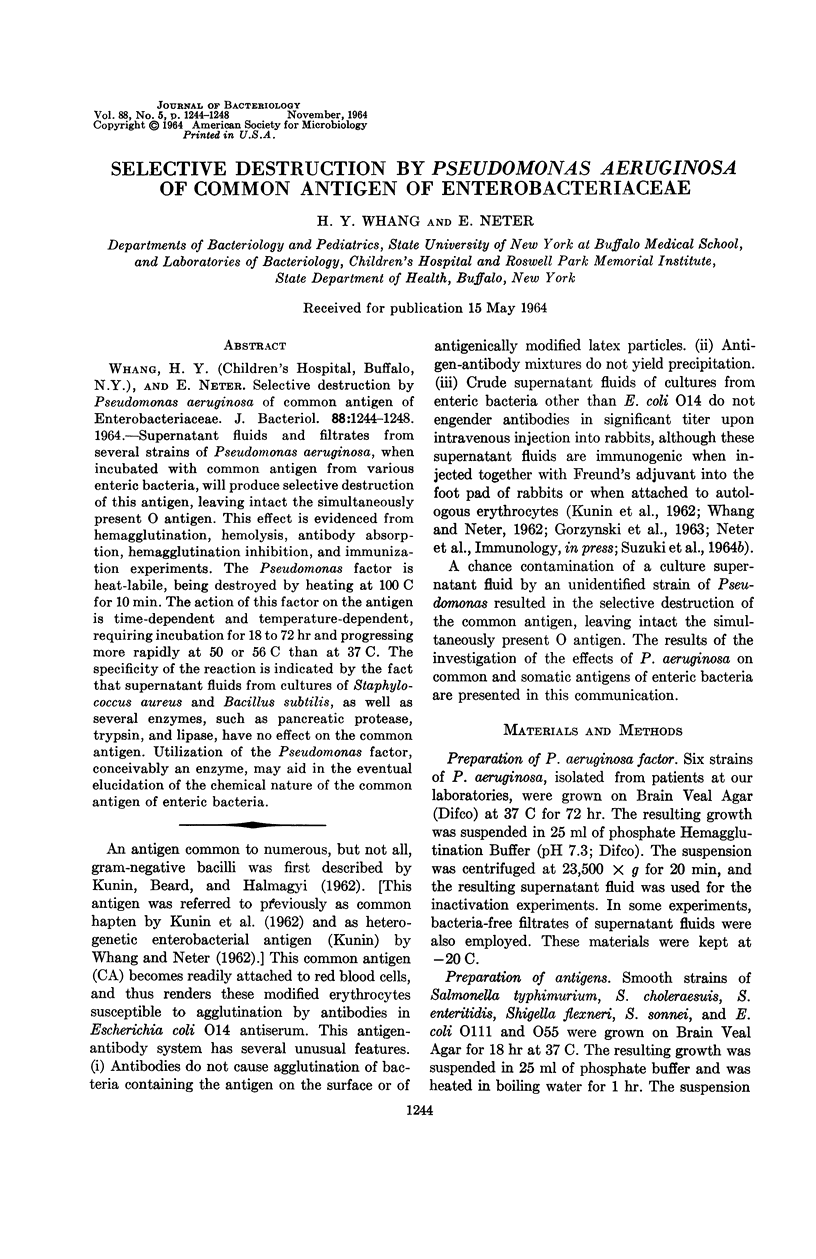
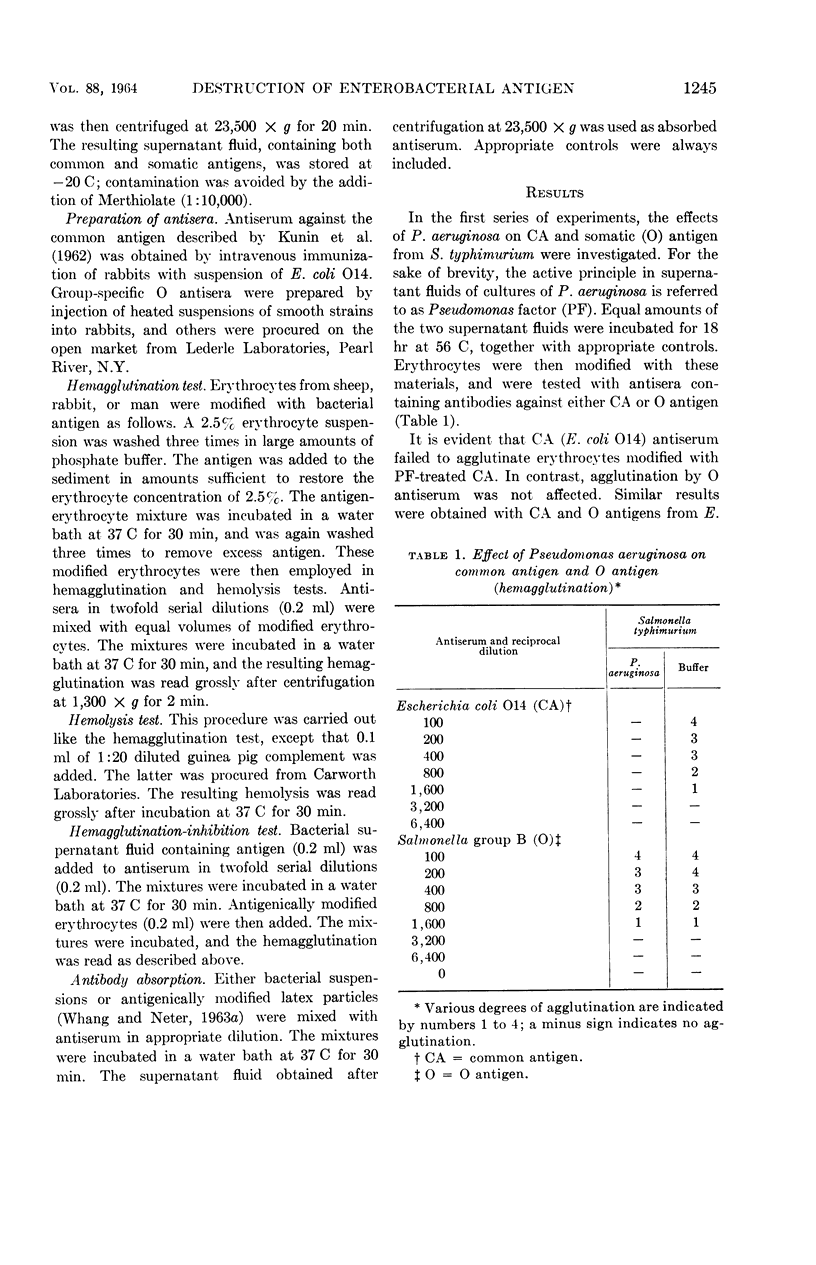
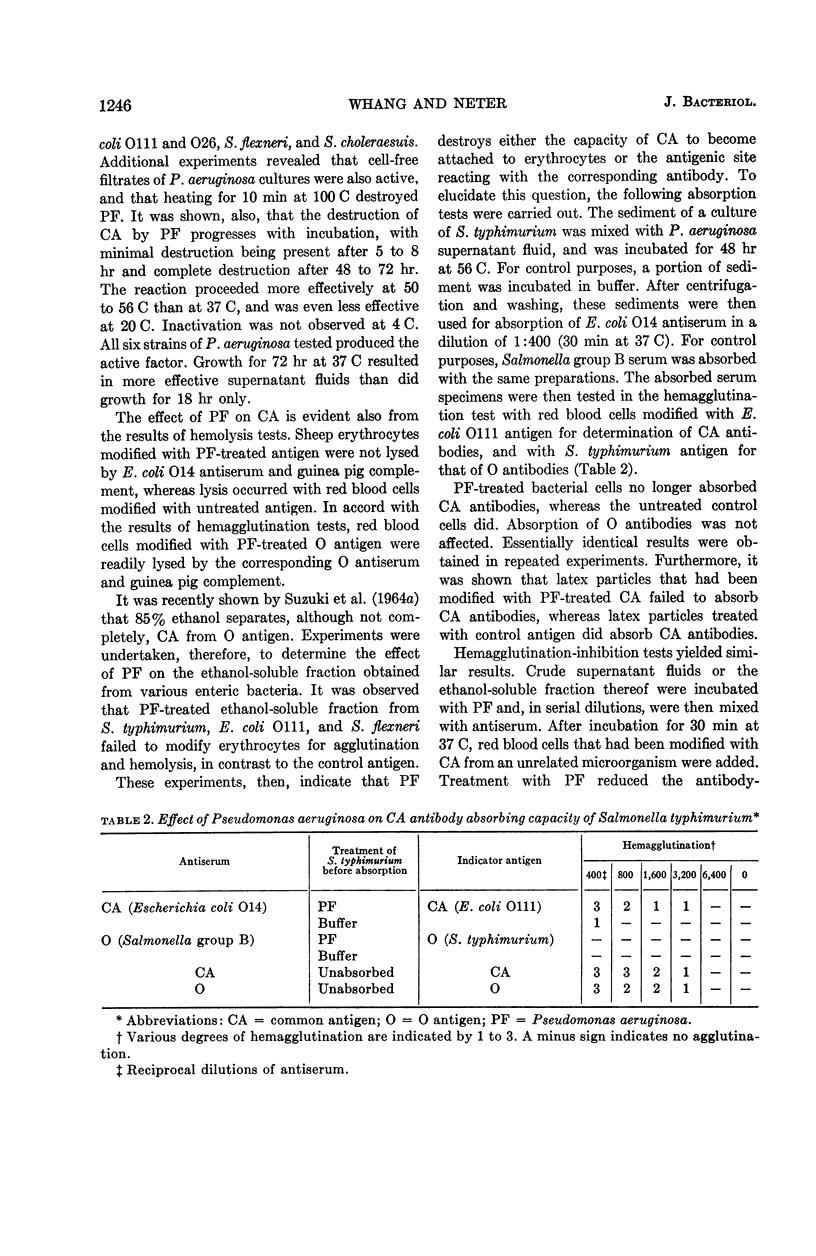
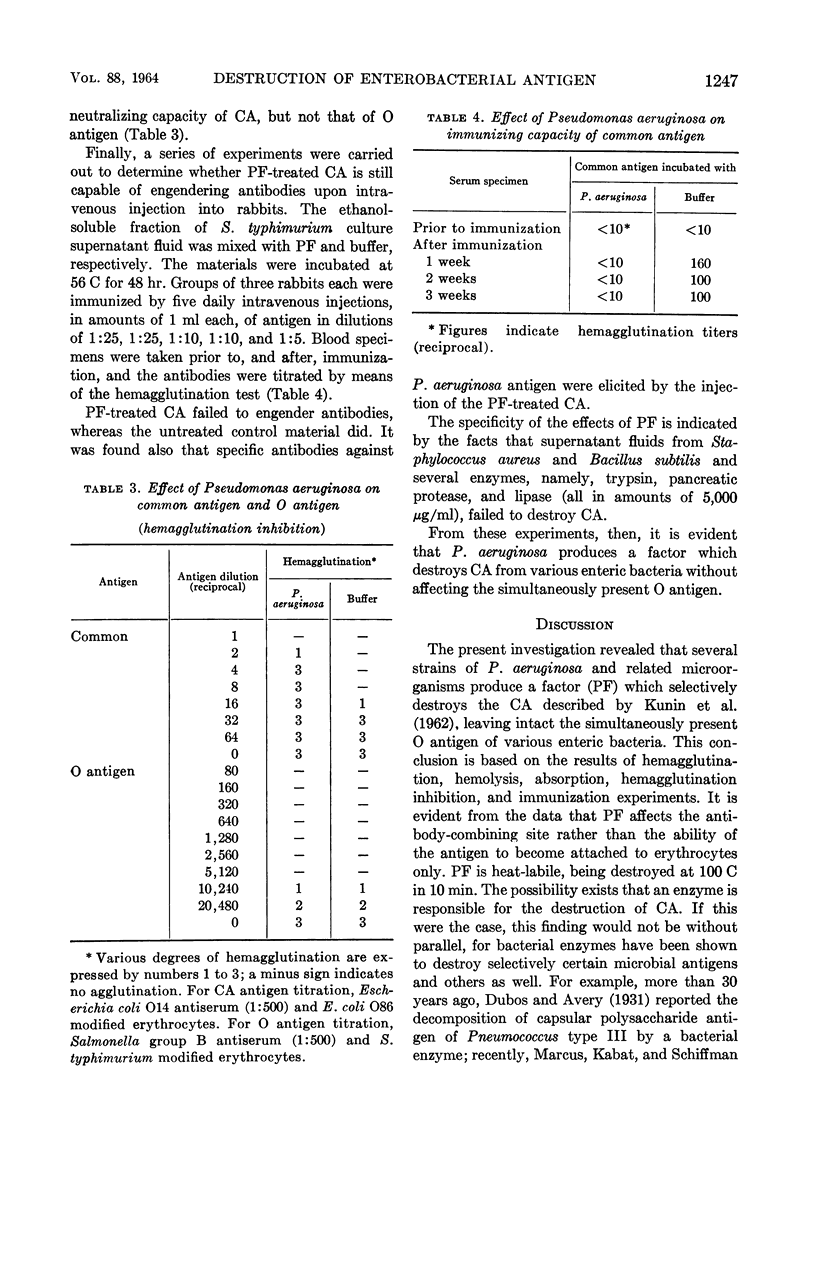
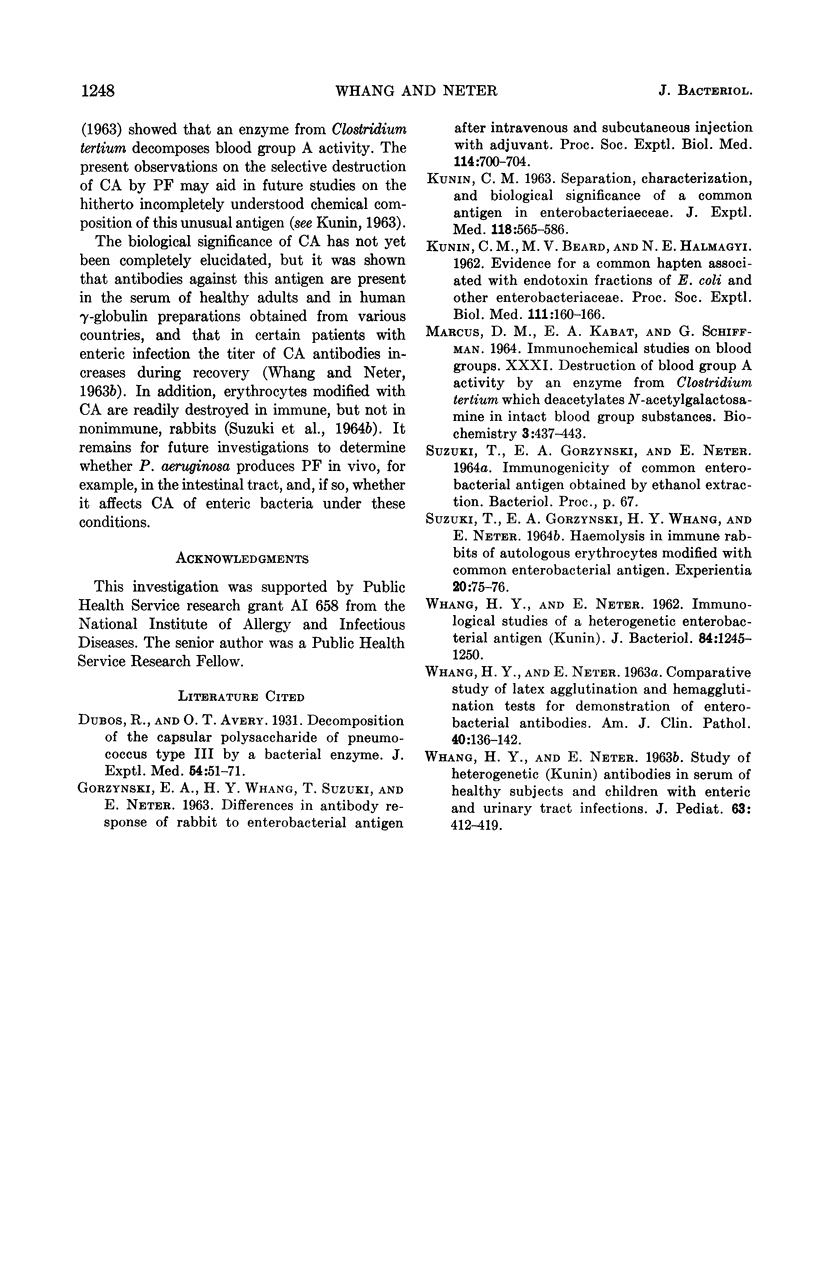
Selected References
These references are in PubMed. This may not be the complete list of references from this article.
- GORZYNSKI E. A., WHANG H. Y., SUZUKI T., NETER E. DIFFERENCES IN ANTIBODY RESPONSE OF RABBIT TO ENTEROBACTERIAL ANTIGEN AFTER INTRAVENOUS AND SUBCUTANEOUS INJECTION WITH ADJUVANT. Proc Soc Exp Biol Med. 1963 Dec;114:700–704. doi: 10.3181/00379727-114-28775. [DOI] [PubMed] [Google Scholar]
- KUNIN C. M. SEPARATION, CHARACTERIZATION, AND BIOLOGICAL SIGNIFICANCE OF A COMMON ANTIGEN IN ENTEROBACTERIACEAE. J Exp Med. 1963 Oct 1;118:565–586. doi: 10.1084/jem.118.4.565. [DOI] [PMC free article] [PubMed] [Google Scholar]
- MARCUS D. M., KABAT E. A., SCHIFFMAN G. IMMUNOCHEMICAL STUDIES ON BLOOD GROUPS. XXXI. DESTRUCTION OF BLOOD GROUP A ACTIVITY BY AN ENZYME FROM CLOSTRIDIUM TERTIUM WHICH DEACETYLATES N-ACETYLGALACTOSAMINE IN INTACT BLOOD GROUP SUBSTANCES. Biochemistry. 1964 Mar;3:437–443. doi: 10.1021/bi00891a023. [DOI] [PubMed] [Google Scholar]
- Suzuki T., Gorzynski E. A., Whang H. Y., Neter E. Hemolysis in immune rabbits of autologous erythrocytes modified with common enterobacterial antigen. Experientia. 1964 Feb 15;20(2):75–76. doi: 10.1007/BF02151248. [DOI] [PubMed] [Google Scholar]
- WHANG H. Y., NETER E. COMPARATIVE STUDY OF LATEX AGGLUTINATION AND HEMAGGLUTINATION TESTS FOR DEMONSTRATION OF ENTEROBACTERIAL ANTIBODIES. Am J Clin Pathol. 1963 Aug;40:136–142. doi: 10.1093/ajcp/40.2.136. [DOI] [PubMed] [Google Scholar]
- WHANG H. Y., NETER E. Immunological studies of a heterogenetic enterobacterial antigen (Kunin). J Bacteriol. 1962 Dec;84:1245–1250. doi: 10.1128/jb.84.6.1245-1250.1962. [DOI] [PMC free article] [PubMed] [Google Scholar]
- WHANG H. Y., NETER E. STUDY OF HETEROGENETIC (KUNIN) ANTIBODIES IN SERUM OF HEALTHY SUBJECTS AND CHILDREN WITH ENTERIC AND URINARY TRACT INFECTIONS. J Pediatr. 1963 Sep;63:412–419. doi: 10.1016/s0022-3476(63)80429-1. [DOI] [PubMed] [Google Scholar]


